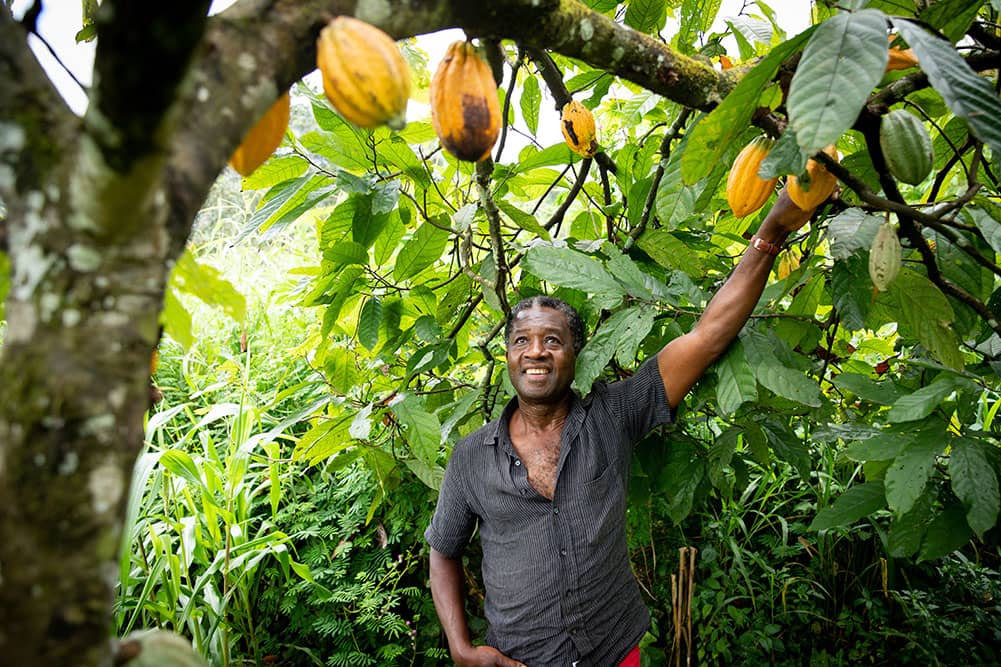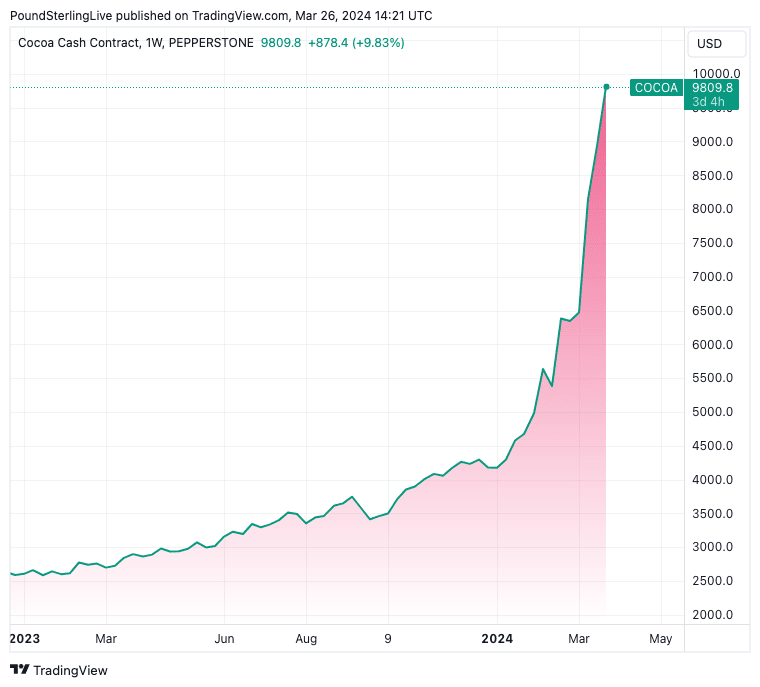Chocolate Crisis: Surging Cocoa Prices Spurred by Margin Calls

Image © Adobe Images
Kathleen Brooks, research director at XTB, explains what's driving the extraordinary rise in cocoa prices, which threatens to make chocolate the "new luxury good in town".
Cocoa has surged to $10,000 per tonne for the first time after a staggering price rally since the start of the year.
The price of cocoa futures has risen by more than 130% so far this year, which is more than Nvidia, which is higher by more than 90% so far this year. It now costs more for a tonne of cocoa than a tonne of copper!
Chocolate is the new luxury good in town, and we expect that sweet treats will see their prices surge in response to this massive price rise. This has also pummeled chocolate makers around the world.

Above: Cocoa prices at one-week intervals.
The Hershey company in the US is down more than 1.2% on Tuesday, the owner of Cadbury’s, Mondelez International, has seen its share price fall 1.7%.
Supply and demand fundamentals have driven the price of cocoa higher this year. Reduced supply from West Africa, the main cocoa growing region, along with a boost in demand, is putting upward pressure on the price of cocoa. (Read: Cocoa black pod disease flourishes in unusually warm and wet weather).
However, the massive $1,500 rally since Friday suggests that momentum and something other than fundamentals are also driving the cocoa price.

Image courtesy of CropLife International.
Margin Calls
There is a concern that the financial dynamics of the cocoa market is also putting upward pressure on the price. Cocoa traders who hold long physical positions tend to hedge in the financial markets with short positions.
The hope is that any losses made from the hedge is covered by the price increase in the physical position.
However, if the cocoa traders are buying their cocoa to hold, and the market is going up almost vertically and setting record highs on a daily basis, then margin calls on the short market positions start to add up.
For those who can’t service their margin calls, they need to close their short cocoa positions, which adds further upward pressure to cocoa prices.
Thus, agricultural trading firms that trade in cocoa could also be struggling on the back of this massive rally. According to Bloomberg, the largest cocoa traders include Touton, Cargill and Olam. We will be watching the news closely for any sign that trading houses are in trouble, as this could exacerbate the price action in cocoa even more.
When an asset’s price diverges from fundamentals like this, then there is usually always fallout. This happened after Russia invaded Ukraine, causing the downfall for multiple energy providers. Usually, the smaller players are cleared out first, and we may also see it in this instance.
Chocolate could become a lucky-to-have, not a must-have product in future
Although cocoa had pulled back from the $10,000 level by mid-afternoon UK time on Tuesday, there is a chance that this is a structural shift higher in the price of cocoa, and one that will not be alleviated quickly.
For example, although a weak crop yield in west Africa has lowered supply, EU regulations that ban the use of commodities that cause deforestation means that the key European chocolate market now needs to find compliant sources of cocoa, which could add costs to the system. This regulation comes at the same time as the supply deficit has reached a record high of more than 400,000 tonnes.
Thus, the high price of cocoa could be here to stay, and chocolate treats in the future may be considered a luxury and a lucky-to-have, rather than an affordable must-have product. For some of us chocoholics, that is a very depressing thought.
As you can see in the chart below, the price of cocoa is rising at a much faster rate than the price of Louis Vuitton handbags and champagne aka, the LVMH share price. Thus, the future of luxury could be chocolaty!



